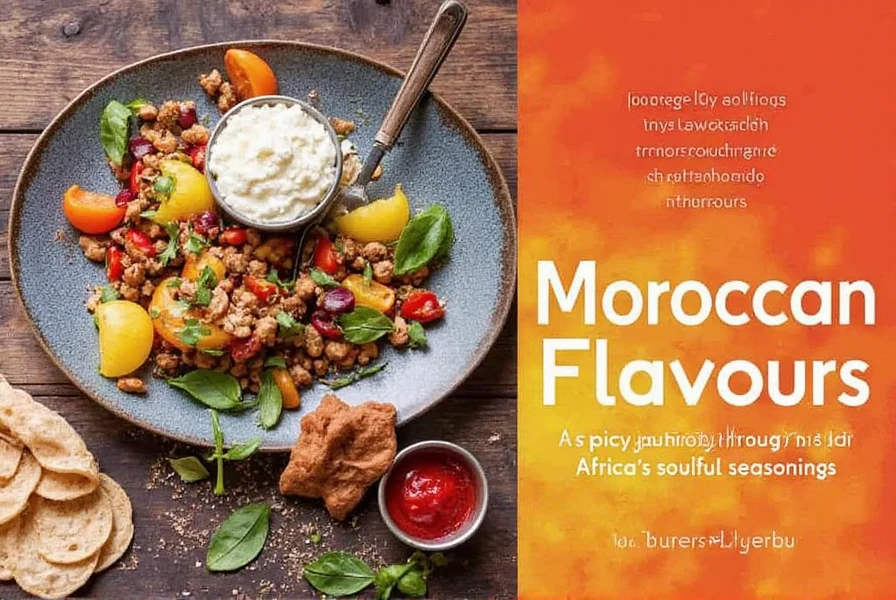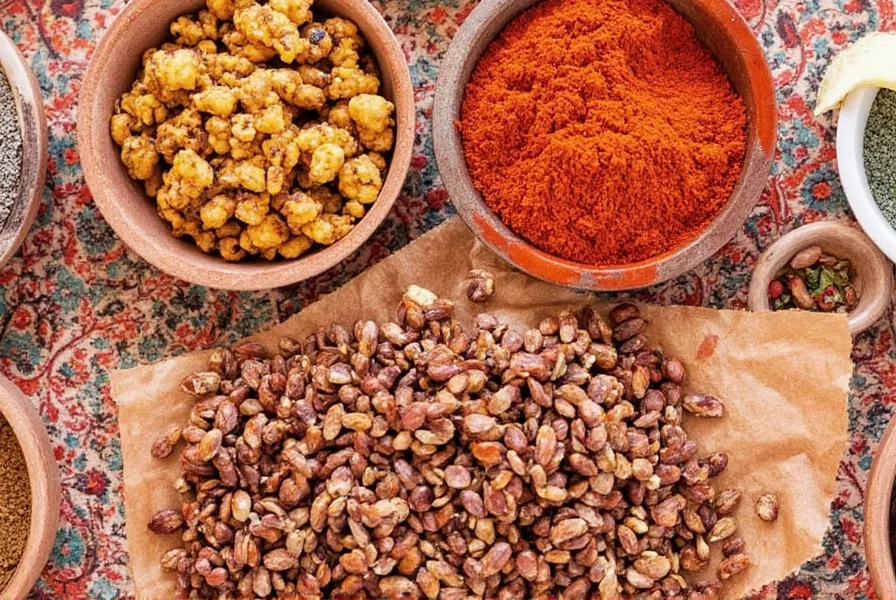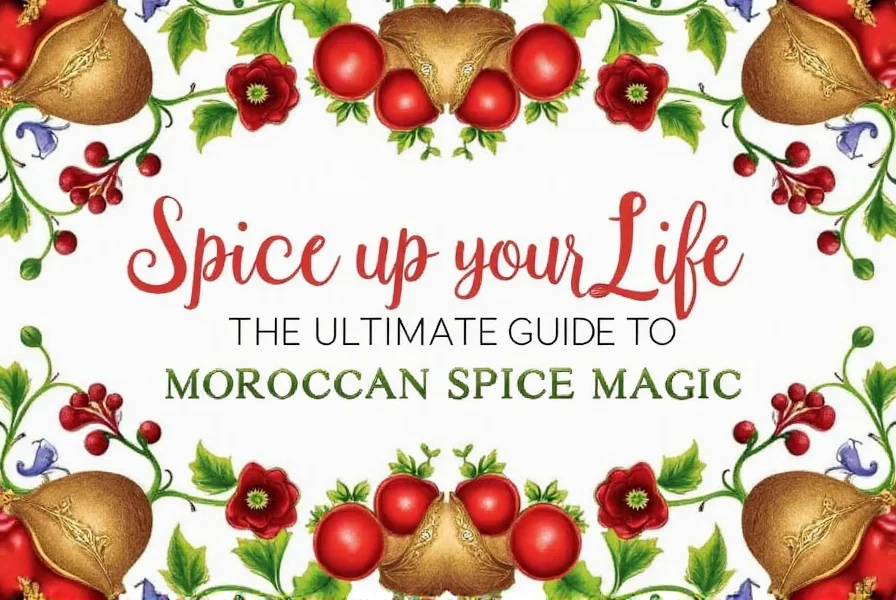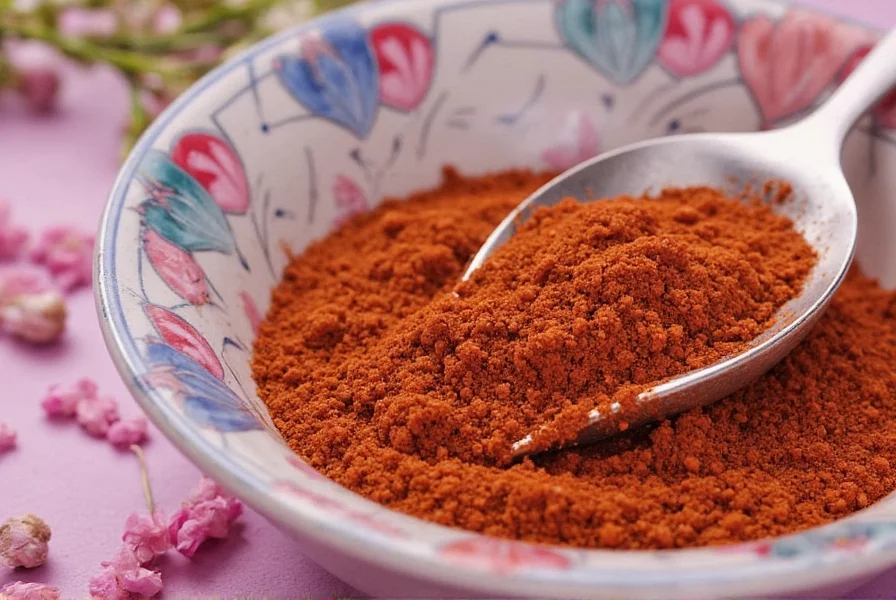Spice Up Your Life: The Ultimate Guide to Moroccan Spice Magic
Moroccan cuisine is a symphony of flavor, texture, and aroma — and at the heart of that harmony lies one of the world’s most captivating spice traditions. In this deep dive into Morrocan spice, we’ll uncover how these exotic blends can elevate your cooking, explore their historical roots, and give you practical tips to bring North African flair to your kitchen. Whether you’re a seasoned chef or a curious home cook, this guide will spice up your culinary journey.
Table of Contents
- What Makes Moroccan Spice Unique?
- A Taste of History: Origins of Moroccan Spices
- Common Moroccan Spices & Their Uses
- Signature Spice Blends You Need to Try
- How to Cook Like a Moroccan Pro
- Buying Guide: Choosing the Best Moroccan Spice Products
- Final Thoughts
What Makes Moroccan Spice Unique?
Moroccan spice isn't just about heat — it's a celebration of complexity, balance, and culture. These blends combine warm, earthy, floral, and citrusy notes that reflect centuries of trade and tradition. Unlike many other regional spice profiles, Moroccan cuisine uses both fresh herbs and dried spices with equal vigor.
You might be surprised to learn that some of the most iconic flavors in Moroccan dishes come not from a single ingredient but from carefully curated spice combinations. Think ras el hanout, harissa, or chermoula — each tells a story of migration, conquest, and innovation.
A Taste of History: Origins of Moroccan Spices

Morocco has long stood at the crossroads of Africa, Europe, and the Middle East — and its spice history reflects that rich heritage. From the Berbers who first used native herbs like za'atar and preserved lemons, to the arrival of saffron, cinnamon, and cumin via Arab traders, Moroccan spice traditions are deeply rooted in geography and movement.
The Moors brought Andalusian influences across the Mediterranean, while the Ottoman Empire added layers of complexity to existing blends. Over time, Moroccans developed their own distinct palate — using bold aromatics rather than overwhelming heat, and favoring harmony over intensity.
Common Moroccan Spices & Their Uses
Here are the essential players in any Moroccan spice cabinet:
- Cumin: Earthy and slightly bitter, cumin is the backbone of many dishes, especially tagines and stews.
- Paprika: Adds color and mild sweetness; often used as a finishing touch on couscous.
- Ginger: Sweet and zesty, ginger balances richer ingredients and gives depth to meat dishes.
- Nutmeg: Surprisingly present in savory dishes, nutmeg brings warmth and complexity.
- Saffron: The golden thread — used sparingly for its luxurious aroma and flavor.
- Cinnamon: Not just for desserts — cinnamon appears in lamb dishes, rice, and even soups.
- Turmeric: Offers a vibrant yellow hue and subtle peppery taste, often used for health benefits too.
Signature Spice Blends You Need to Try
No exploration of Morrocan spice would be complete without delving into its legendary spice mixes:
| Spice Blend | Main Ingredients | Best For |
|---|---|---|
| Ras El Hanout | Cumin, coriander, cinnamon, cardamom, turmeric, allspice, and more (often 10+ spices) | Lamb tagine, grilled meats, rice dishes |
| Chermoula | Paprika, cumin, garlic, lemon, olive oil, parsley, cilantro | Fish marinades, seafood, roasted vegetables |
| Harissa | Red chili peppers, garlic, olive oil, coriander, caraway | Spicy condiment, stew base, or dip |
| Zhoug | Green chili, coriander, garlic, salt, olive oil | Falafel, sandwiches, yogurt dips |
How to Cook Like a Moroccan Pro

Cooking with Morrocan spice doesn’t have to be complicated. Here are some easy yet transformative techniques and hacks:
Practical Tips for Using Moroccan Spices
- Toast Your Spices First: A quick dry toast in a pan unlocks deeper flavor — especially effective with cumin, coriander, and fennel seeds.
- Bloom in Oil: Heat spices briefly in oil to release aromatic oils. This works well for paprika, turmeric, and powdered blends like ras el hanout.
- Balance Sweet and Savory: Don’t shy away from pairing spices like cinnamon and ginger with meats or dried fruits. It’s a signature move in Moroccan cuisine!
- Use Fresh Herbs: Cilantro and parsley play crucial roles alongside spices. Chermoula wouldn’t be the same without them.
- Preserved Lemons Add Magic: These salty, fermented lemons add brightness and umami to spice-heavy dishes.
- Layer Flavors Gradually: Moroccan dishes develop flavor slowly — start with aromatics, add spices next, then build around proteins and vegetables.
Buying Guide: Choosing the Best Moroccan Spice Products

If you're new to Moroccan spice blends or want to upgrade your pantry, here’s a curated buying guide to help you choose the right products based on quality, authenticity, and usability.
Top Picks for Authentic Moroccan Spice Blends
| Product | Description | Advantages | Best For | Recommended Use |
|---|---|---|---|---|
| Ras El Hanout by Atlas Spices | Hand-blended from 14 traditional spices in Fez, Morocco | Authentic recipe, organic ingredients, no fillers | Slow-cooked lamb, root vegetable tagines | Dust over meat before roasting or stir into grains |
| Harissa Paste by Mina | North African style with smoky undertones | Smooth texture, versatile heat level, vegan-friendly | Grilled fish, chickpea stews, sandwich spread | Swirl into hummus or use as a marinade base |
| Chermoula Seasoning by Simply Organic | Ready-to-use blend with sun-dried herbs and spices | Convenient, great for beginners, certified organic | Seafood lovers, quick dinners, grilling | Marinate shrimp or mix into couscous |
| Moroccan Za’atar Mix by Zesty | Blend of thyme, sumac, sesame, and sea salt | Vibrant flavor, hand-sourced ingredients | Flatbreads, salads, dipping oils | Sprinkle over labneh or sprinkle on avocado toast |
Where to Buy Moroccan Spices
- Local Specialty Markets: Look for Middle Eastern or North African grocery stores for fresher options.
- Online Retailers: Websites like Amazon, Penzeys, and specialty shops offer international spice blends.
- DIY Blending: If you enjoy experimenting, grinding your own spices lets you customize flavor profiles.
Final Thoughts

Moroccan spice is more than just an ingredient list — it's a gateway to culture, history, and unforgettable meals. Whether you're simmering a slow-cooked tagine or spicing up your morning eggs, the magic of Moroccan flavors can transform your kitchen into a corner of Casablanca or Marrakech.
So go ahead — reach for that jar of ras el hanout, swirl some harissa into your soup, or whip up a batch of chermoula. Let the spices sing and embrace the spirit of Morocco one bite at a time.











 浙公网安备
33010002000092号
浙公网安备
33010002000092号 浙B2-20120091-4
浙B2-20120091-4